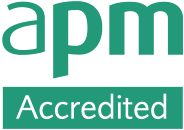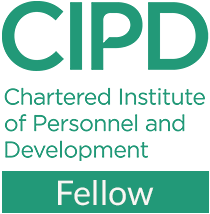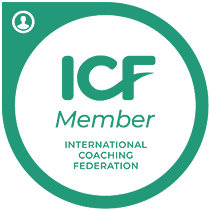
Many organisations are now operating in a Volatile, Uncertain, Complex and Ambiguous context (VUCA), as a result of technological change, and globalisation which has increased the pace of change, and challenges such as cyber threat and opportunities such as ‘big data’. More recently of course we have started to see the impact of COVID-19 which on the face of it has spurred major change in organisational process, ways of relating and assumptions about ‘how things need to be’. Dealing with the scale of change many organisations have seen as challenging.
The failure rate it is claimed is up to a 70% of change programmes which is not sustainable. The issue with this percentage is that there is no agreed empirical data to agree what we mean by failure to assess the number of programmes that succeed or fail. However, having asked cohorts from different companies all over the world no organisation as yet as been able to cite any more than the occasional programme or project that have succeeded and this suggests to me not only a question of how you define and measure success but issues of how we learn and develop our talent to assess change more objectively. The rationale for high rates of change failure are various but many are about how people are engaged and communicated with, as well as issues of clear change agendas, bureaucracy, poor process, capability issues and so on. VUCA change has in built complexity in that it usually involves the interaction of people inside and outside the organisation in stakeholder groups, linking with strategies, structures, processes and different cultures in complex social systems. Dealing with VUCA change in traditional step by step approaches does not deal with level of complexity. Complexity theory helps us see VUCA change as emergent with more reliance on self-organisation than the more mechanistic, top down approaches to change of the past. Seeing change from a complexity viewpoint has alignment to other findings concerning change for example the importance of employee engagement being linked to innovation and improved profit. Complex change and engagement require more focus on leadership not just management requiring additional capabilities. The diversity literature talks to the importance of different perspectives enabling change that is more likely to be owned and harnessing the discretionary effort of people enabling more effective innovation. These concepts also align to sustainability in its many guises and linking different stakeholder groups to found more acceptable solutions to wider communities. What this means is we need to think and act differently in implementing change in organisations.
Agile is a change approach that embraces a number of different tools and techniques, which have been emerging over the last 25 years. Inbuilt into its approach are links to the concepts noted above as at its heart Agile recognises the pace of change and need to deal with the complexity associated with ensuring different stakeholders work together effectively to deliver value early. Agile recognises the need to have leadership that is facilitative, the importance of engagement and the value of diversity. Those that have implemented Agile successfully have experienced benefits including improved customer and employee satisfaction, improved productivity, improved profit and competitiveness, lower number of defects, quicker return on investment, cost savings on office space/documentation/bureaucracy, reduced risk, simplified process. Implementing Agile is a major change with the same issues as any other organisational change and therefore requires much more than adopting key processes such as Scrum. It is also about a change of mindset as to how we deal with change. It needs to be recognised that Agile is not a cure all for all projects, it started in software development and has expanded into innovation, product development, change approaches generally. It has been adopted both as pure approach and as a hybrid approach with more traditional methods. It is an approach that is still being experimented with and so far which projects adopt this approach depends on the industry, governance etc.
As with any VUCA change Agile needs to be implemented using an Agile approach requiring a change of mindset that takes account the 6 C’s. Those adopting agile need to understand and interpret Context, to provide a compelling narrative of why the change has to happen, that enable Commitment and engagement at a deep psychological level to the agile approach and change agile is supporting, for those used to traditional change approaches this means personal change that requires Coaching, as it changes roles and a more transparent interaction requires improved emotional intelligence as well as the more facilitative aspects of leading rather than managing, this enables more effective Courageous Conversations which inherently is about Challenging ideas, and issues whilst Collaborating as opposed to more formal relationships. An issue for those concerned with talent development are that the capabilities required for Agile as opposed to the more traditional methodologies require more advanced capabilities in a number of areas. For example emotional intelligence covering areas not often discussed for example having an effective learning practice, and dialogue rather than debate skills.
I have researched how you can develop leaders to engage with VUCA strategic changes. Like others in this field I explored the theory of constructive developmental theory and identified a clear distinction of 8 mindsets towards change. All mindsets have their pluses and minuses, however, when considering people who will be key in implementing Agile methodologies three mindsets are more likely to have developed the capabilities required of Agile and the 6 ‘C’s”.
Key mindsets which include that of Challenger, Strategist and Catalyst share a set of capabilities associated with Agile. Namely, they inherently pay attention to the context, and understand the organisation as a social system, so set up environments that enable challenge, are more comfortable with diversity of opinion and tend to be more about best results for stakeholders than for themselves. They also tend to be more learning focused which is key with the quick feedback loops inherent in scrum and tend to be able to balance more between task and person.
From a talent perspective where Agile is to be a key enabler to competitive advantage hiring, assessing, developing the right talent for the right Agile projects will be key. This will require far more of those responsible for developing talent, they need an appreciation of mindsets, the advantages and disadvantages and it provides a path to support the coaching and enables a company to assess what is viable in the short, medium and longer term in recognising the key stages of moving towards having an effective and successful agile culture.
I am here to help you
Get in touch with me today and let’s start the journey together. If you want further information about the general coaching programmes please see the attached coaching brochure 2



